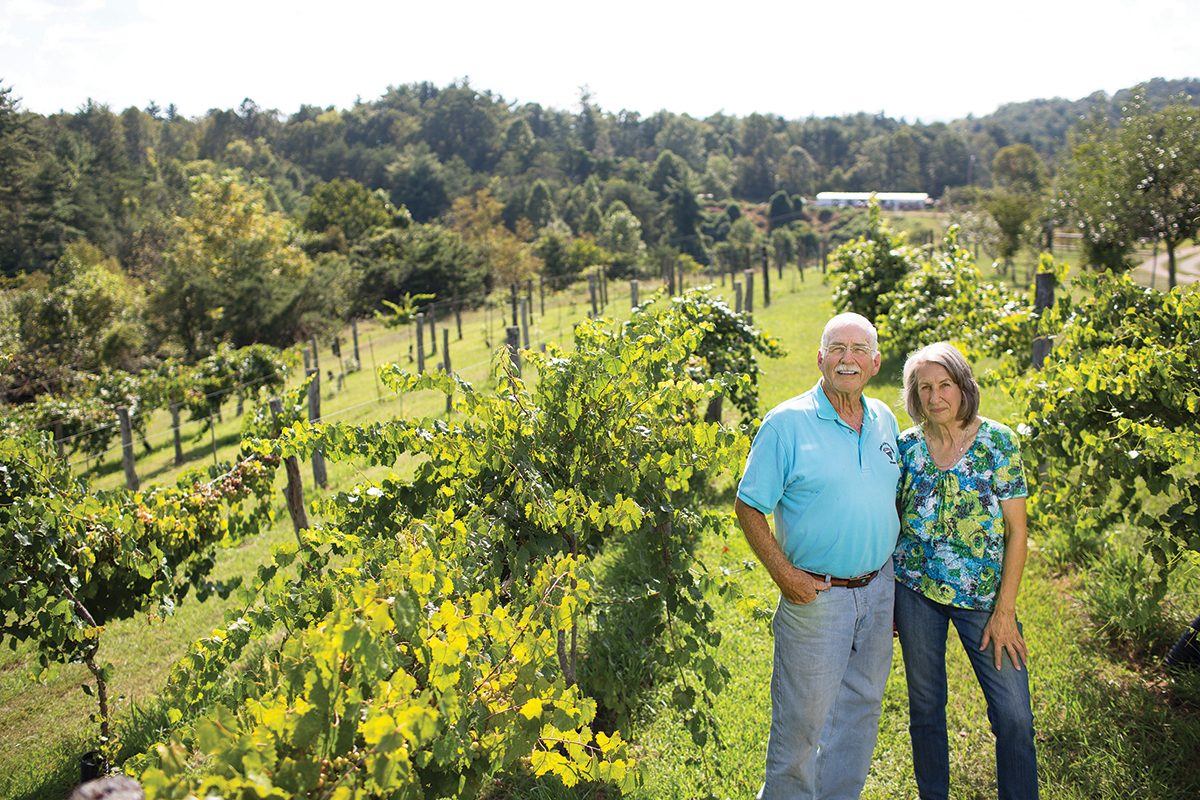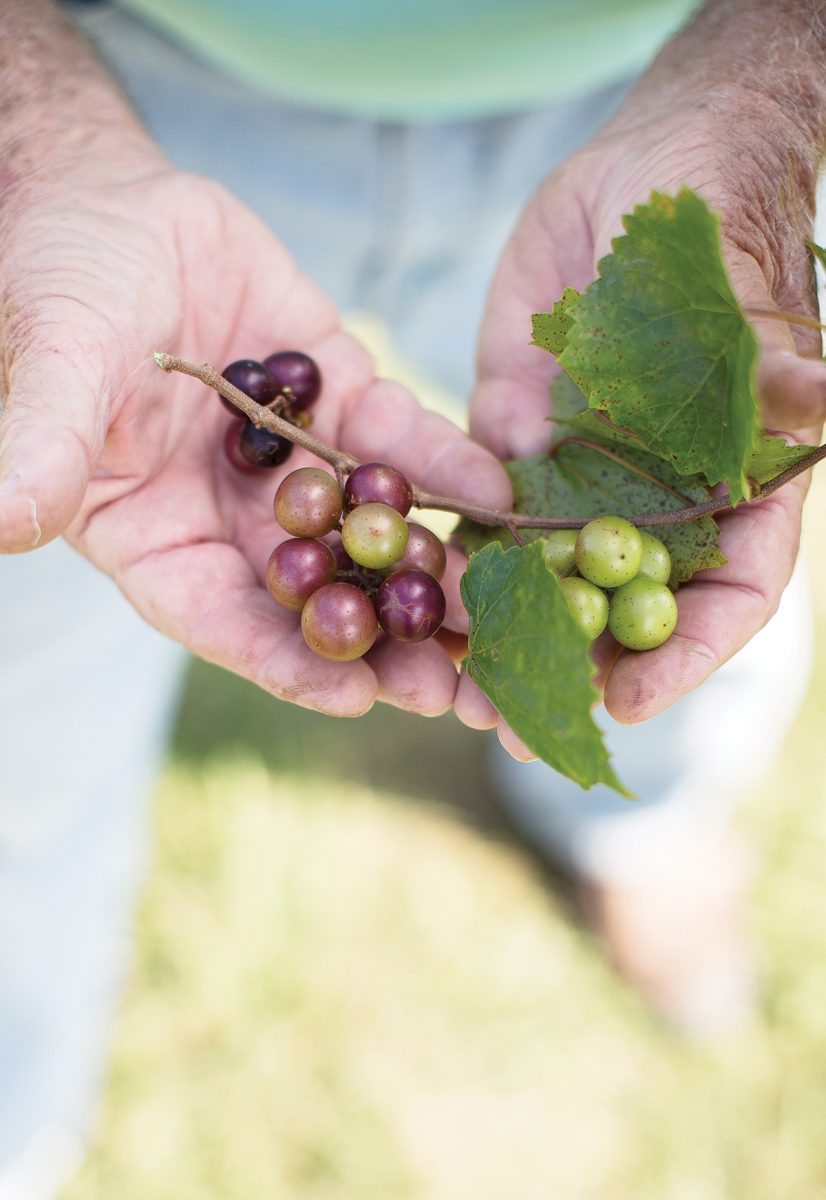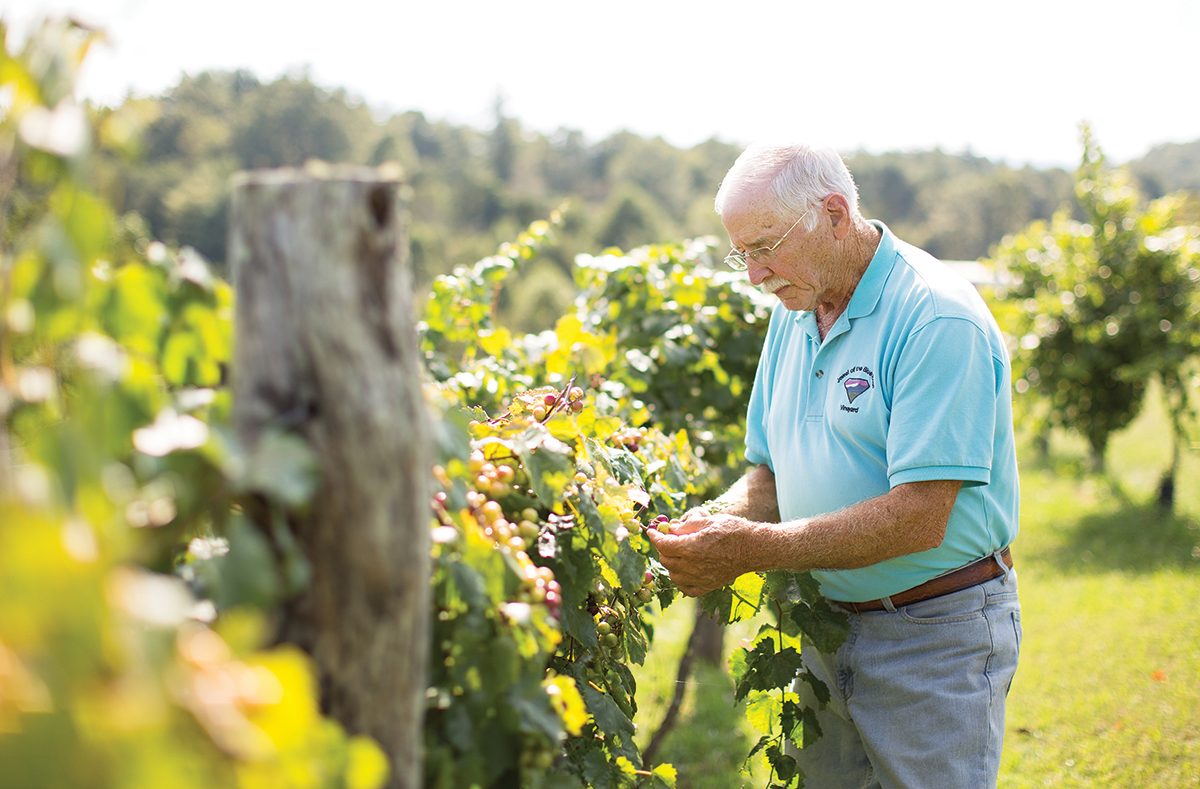Grape grower’s cold-hardy muscadines defied the skeptics and flourished

Photo by Colby Rabon
North Carolina’s official state fruit is the scuppernong, a variety of muscadine grape. But until Chuck Blethen arrived here a few years ago, muscadines and scuppernongs were thought to be an exclusively warm-climate grape, common only to the Piedmont and coastal areas. He changed all that by cultivating the world’s first native cold-hardy muscadines on his land at Jewel of the Blue Ridge Vineyard in Madison County, farming with his wife Jeannie. Now he delivers TedX talks, serves as president of the French Broad Vignerons of WNC, and has a newly released book, Entertaining with Wine (2019), with insights including why clinking wine glasses when toasting is a no-no (fine glass with thin rims can break).
I understand you started growing grapes to show folks how it could be economically viable in the mountains.
Yes, I found about 65 varieties that do well here. I got other farmers to do test plots and started giving talks and classes about growing grapes.
How’d you start experimenting with muscadines?
In virtually every class, some old guy in the back would pipe up and say, “I got some ‘scuppadines’ growing out by my barn.” But this is tobacco country — most people here don’t know grapes. I’d say, “I don’t think you know what kind they are, because muscadines and scuppernongs are a hot-weather grape.” But they insisted, “They’re out there!”

Photo by Colby Rabon
Eventually you had to investigate?
Old timers would say, “My granddad used to have them, but the cows ate them all.” So I was hopeful. I made about 40 trips up in some hollers to look. But they weren’t muscadines. Sometimes they would have Fox grapes, Catawbas, Niagaras, or Concords. Then, after a couple years of searching, we found a patch.
What did you think?
I thought, “Wait, they aren’t supposed to be here.”
Yet there they were …
I took a branch to a friend at the agricultural extension office and he was nice about it. He said, “I know you’re new here. But they don’t grow here.” So I took pictures of the trunk, leaves, and tendrils that are unique to muscadines, and showed them to several muscadine experts.
But then you had to try to grow your own …
After the first frost, I harvested a couple of gallons and my wife made some preserves, and I took some back to my friend at the extension office. He said, “Those taste pretty good!” I said, “Not bad for a grape that isn’t supposed to be growing here, but if they did grow here, they would never get ripe enough to make anything useful.” … It took three years and hundreds of vines to figure out how to propagate the cold-hardy red Katuah Muscadines. We planted a half-acre vineyard with them. This year, we got about 15 cases of preserves out of them, and made wine for ourselves, too.

Photo by Colby Rabon
What was the process to get your newer grape, the Katuah Scuppernong?
I visited a friend who had five acres of certified-organic scuppernongs growing down in the Piedmont, and picked about 400 pounds. After we pressed them for the juice to make wine, we scattered the seeds on the ground, and when spring came, we had hundreds of little baby plants. I put them in a raised-bed garden and only 50 came back in the spring. I said, “Aha, those probably have a cold-hardy gene.” I left them for another winter, and it was a pretty severe one, but all 50 came back. We had to let them grow for several years until they had their first blooms so we could sex them. Out of those 50, four of them were self pollinating, so I use those for cuttings to propagate our plants.
How many have you grown from those four?
Fifty or sixty as of this year.
Describe the flavor…
The Katuah Muscadine have a flavor like the red Noble muscadine available in most commercial vineyards out east. The Katuah Scuppernong has a flavor like the white Carlos muscadine, also grown out east. Both have the classic foxiness flavor and aromatic smell.
How do you winterize your vineyard?
Only the newly planted muscadines and scuppernongs get “winterized” after they go dormant by burying them under 6-8 inches of wood-chip mulch. The next winter they survive just fine.
How hard was it to get a trademark?
Getting a trademark was not possible for the name “Katuah” because it’s a place name — the Cherokee name for the Southern Appalachians. My dad was half Cherokee. … We had to integrate the place name with some artwork to get our trademark.
Where did you grow up?
West Virginia. We were so far back up the holler that you had to pipe in the sunshine and the moonshine. My dad was a coal miner.
Not an easy life.
There were times growing up when a dime to me was as big as a wagon wheel.
Jewel of the Blue Ridge Vineyard, Marshall. For information about classes, Chuck Blethen’s book Entertaining With Wine, handcrafted items, or farm tours (through October), call 828-606-3130 or see jeweloftheblueridge.com.
